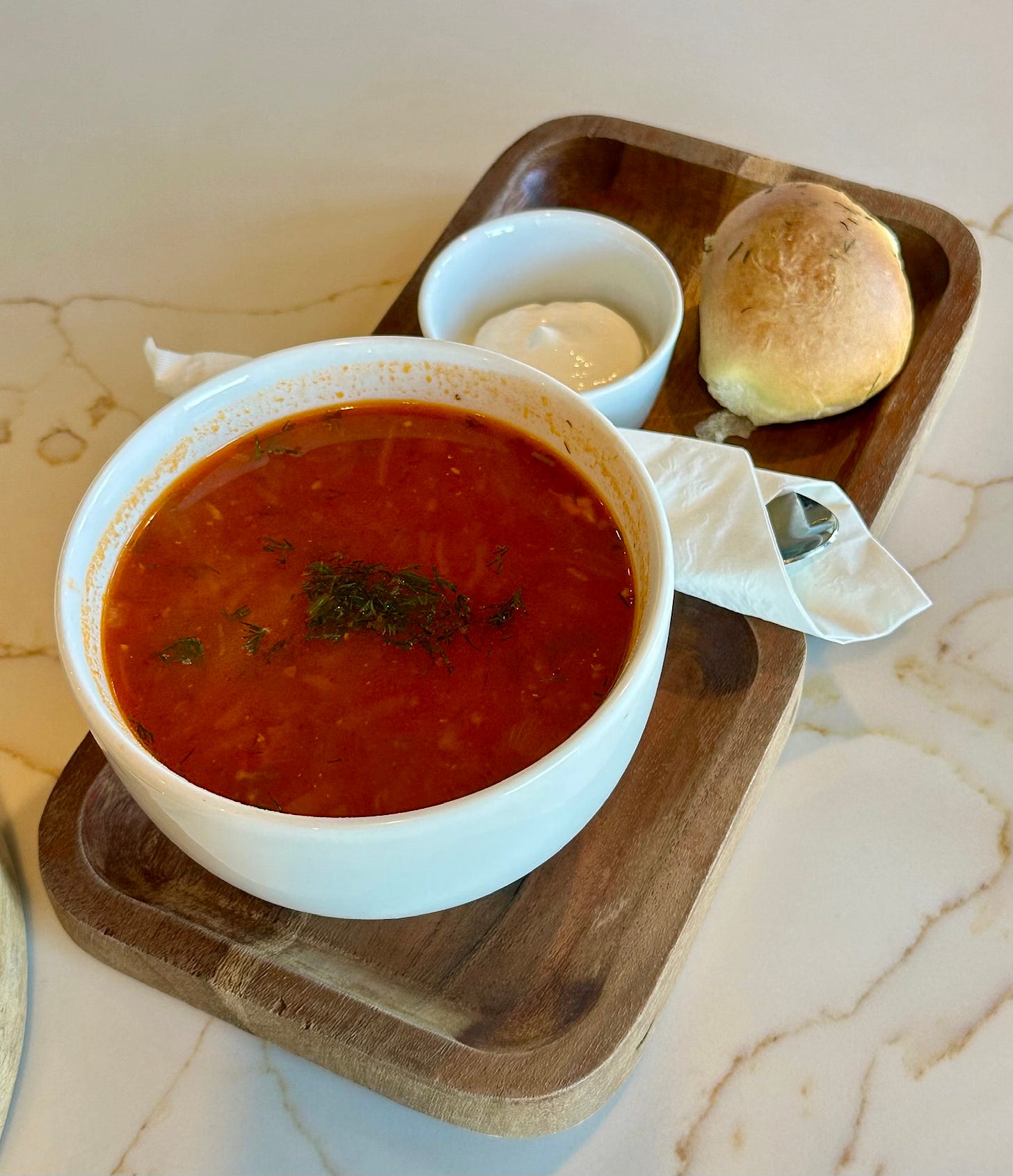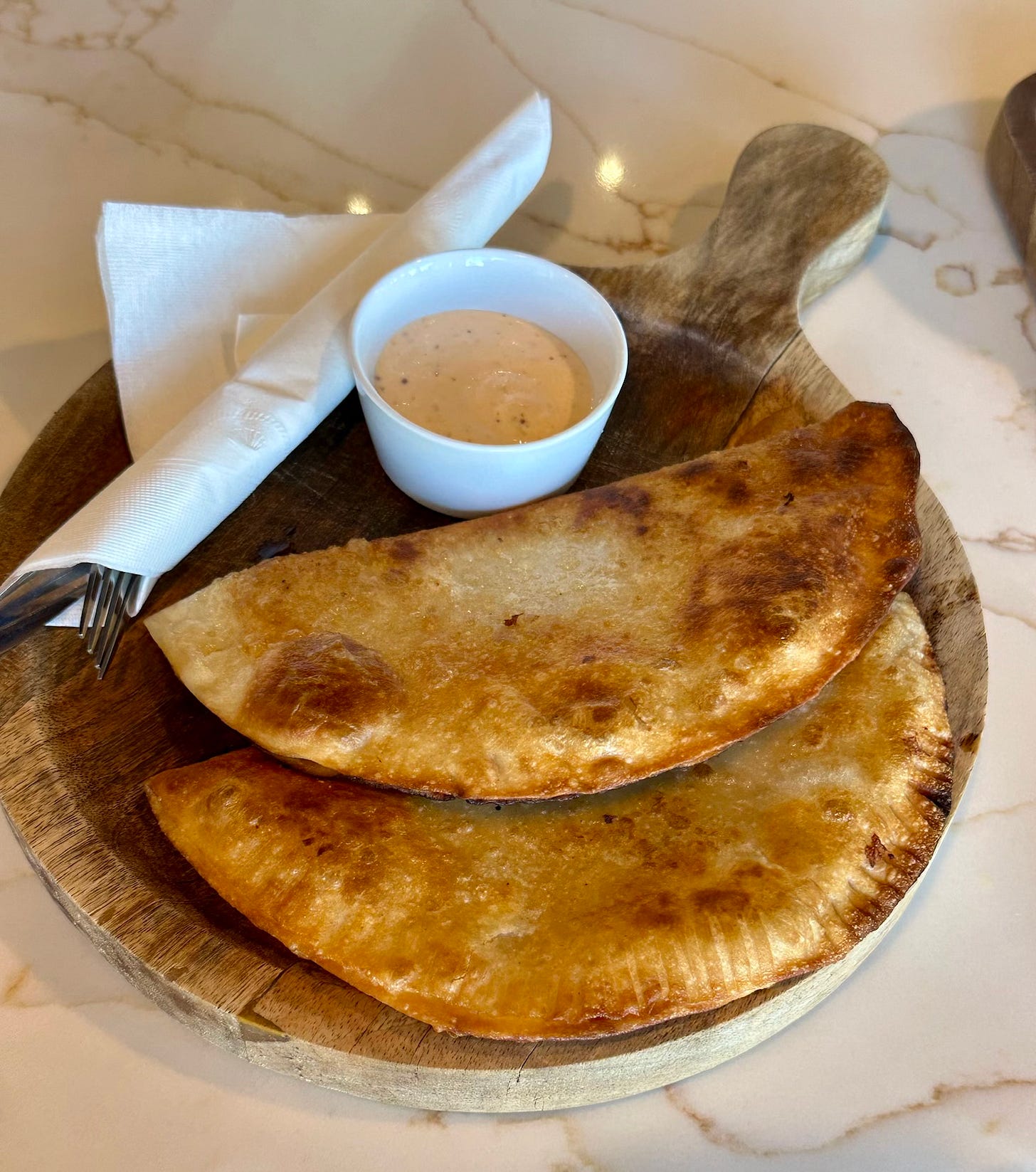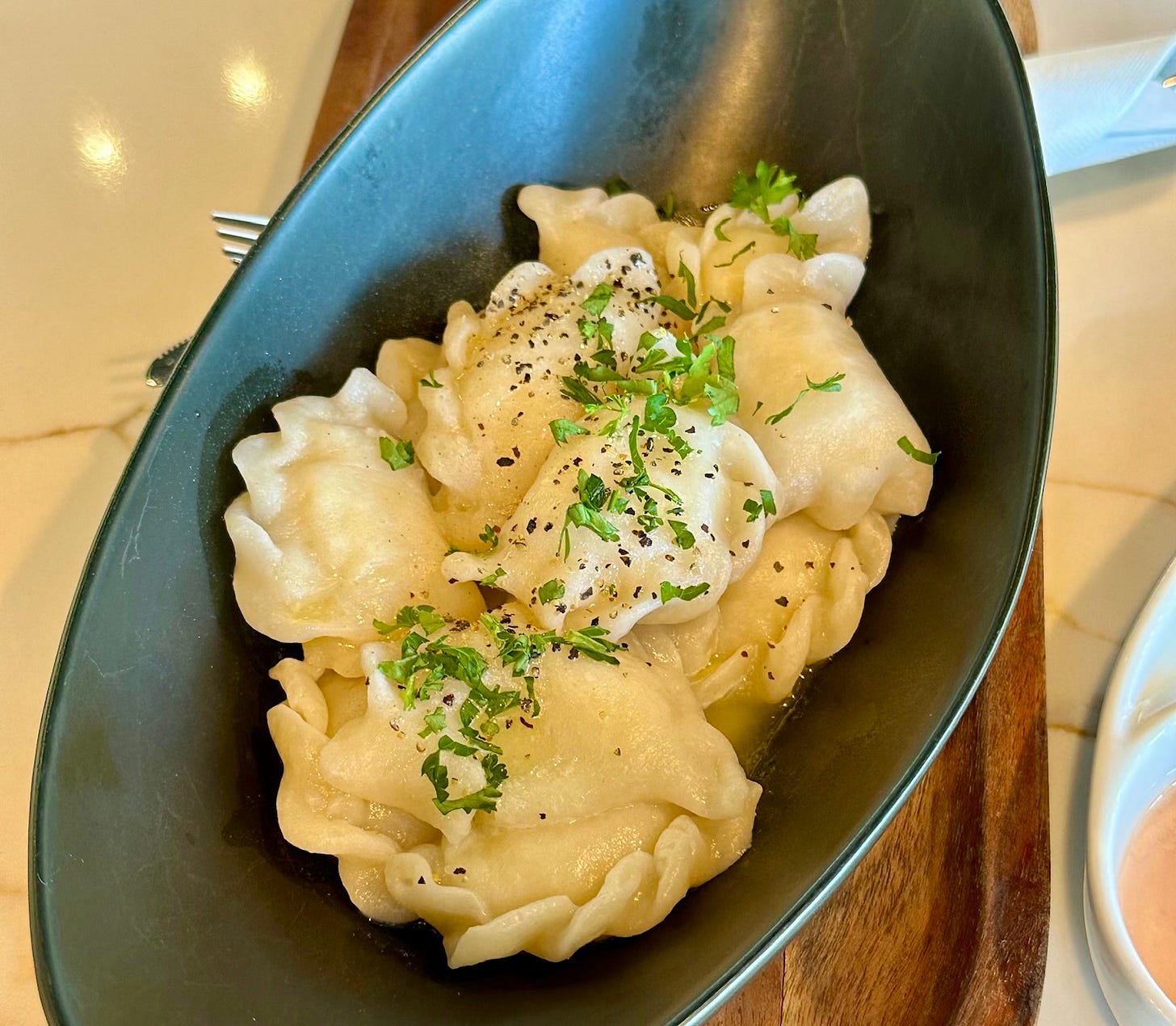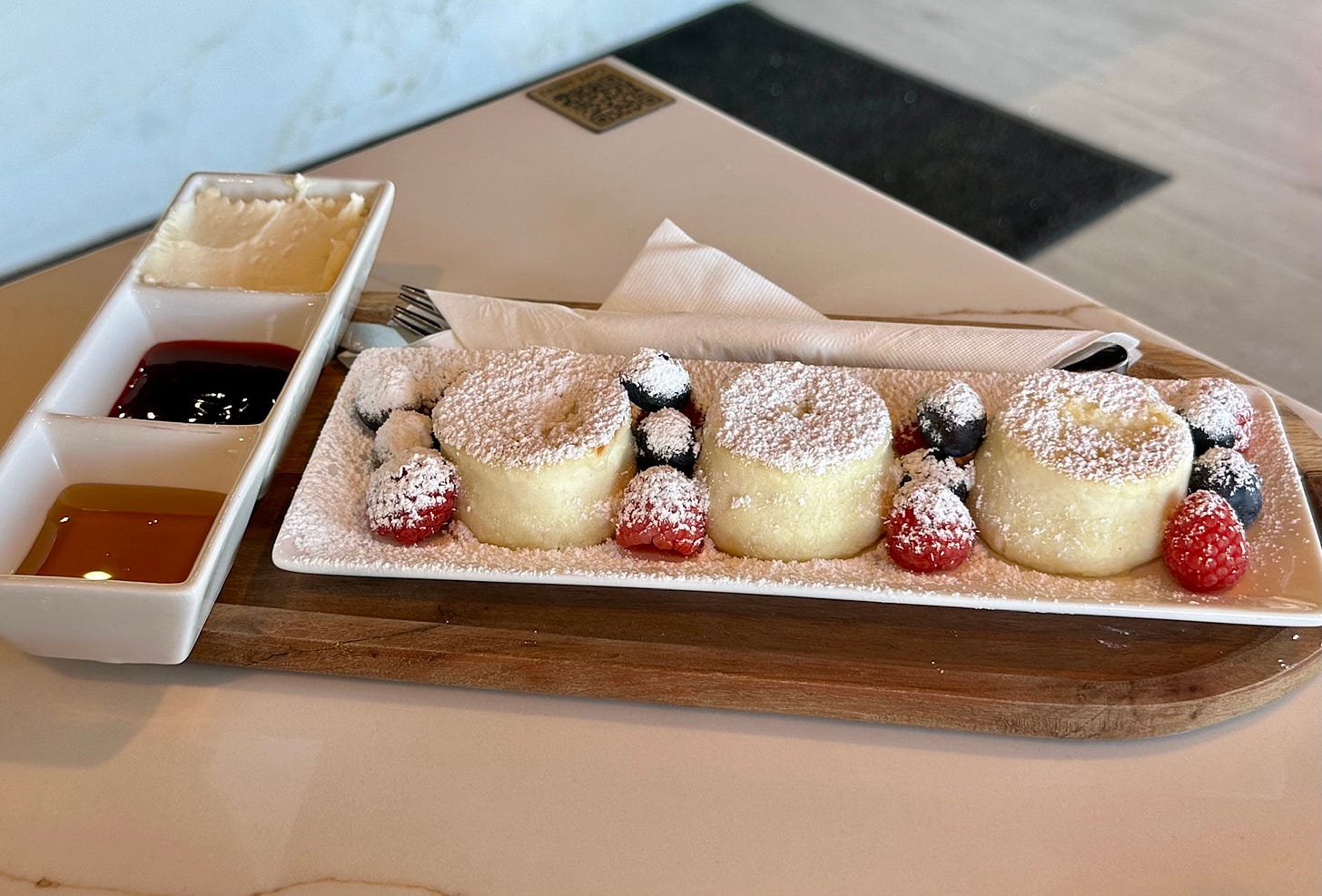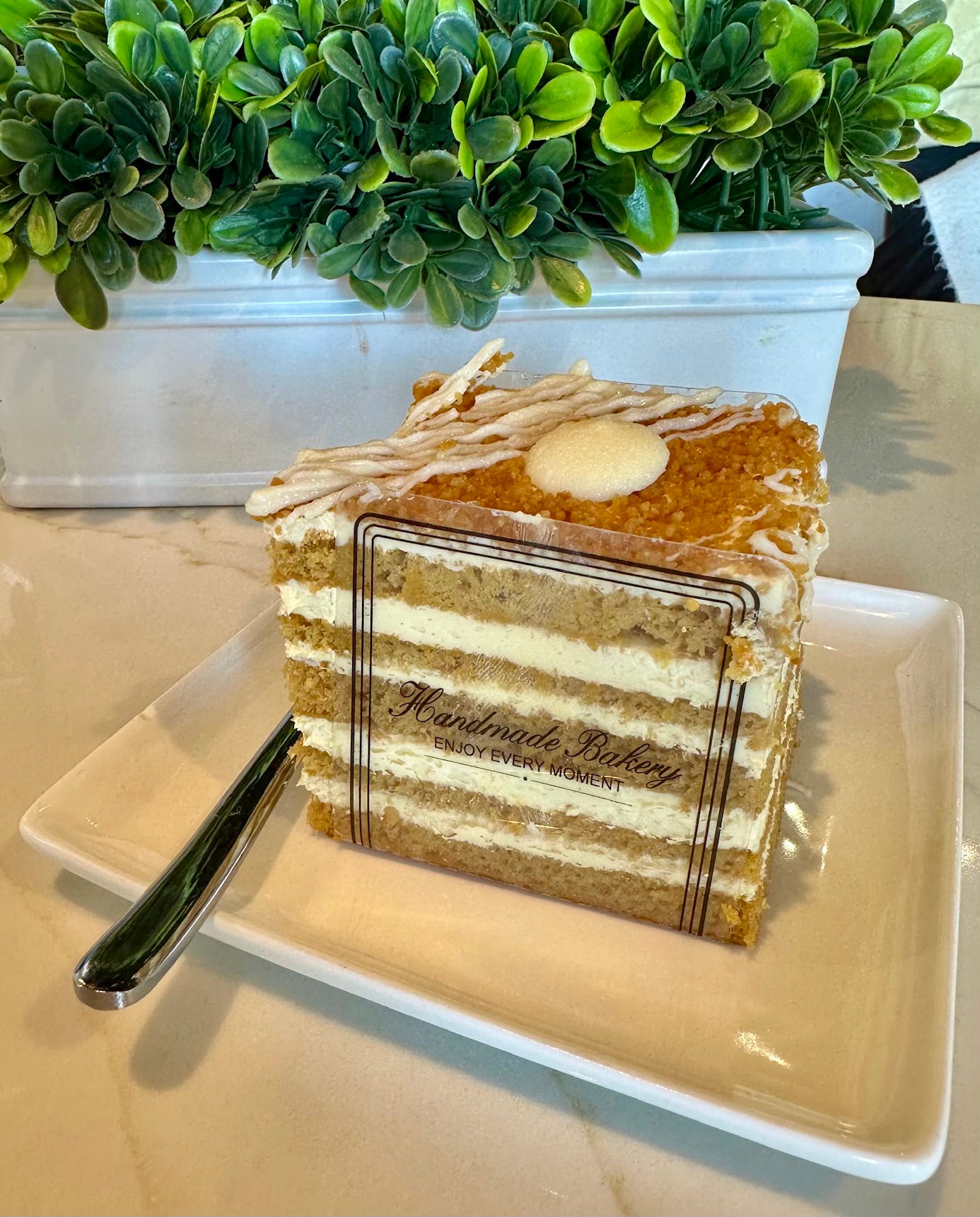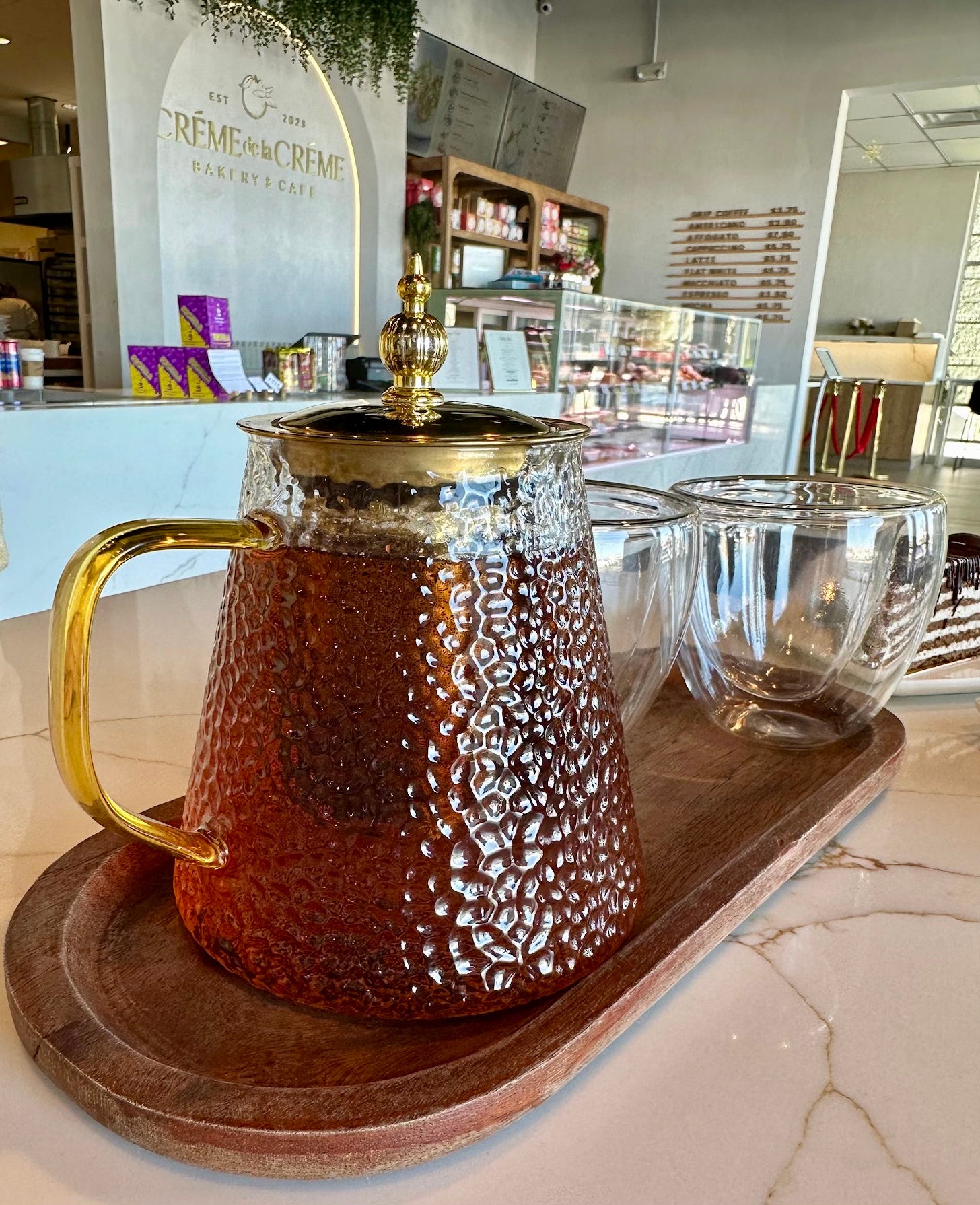Dine Like an Expert: Ukrainian Fare at Créme de la Créme
Plus, a tea-focused cafe in the Short North gets a refresh.
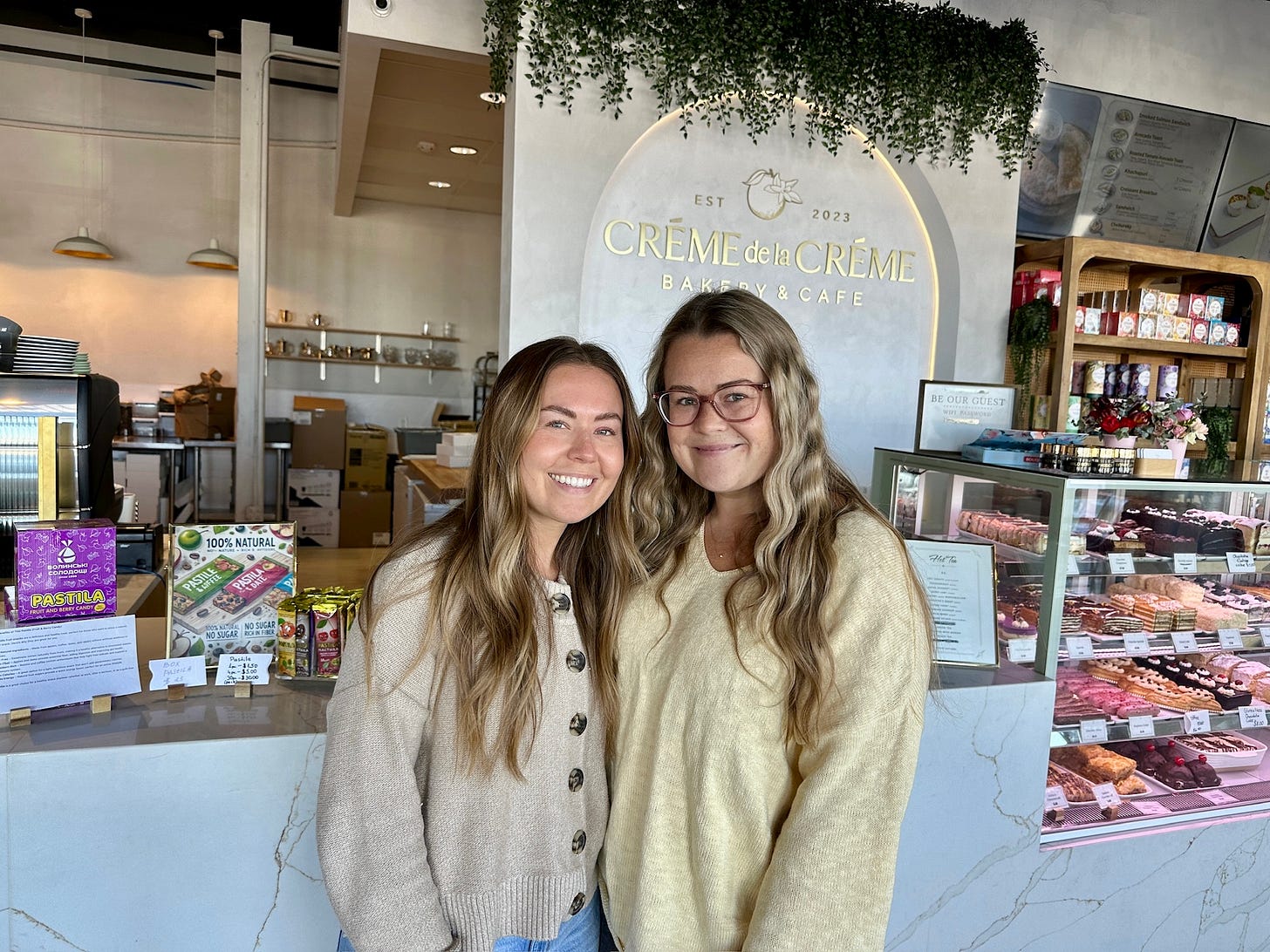
Dine Like an Expert: Ukrainian Fare at Créme de la Créme
By Bethia Woolf
Earlier this week, I had lunch with Alina and Kate Antonyuk, the two sisters behind Tasting Columbus on Instagram. We decided to meet at Hilliard Green’s Créme de la Créme Bakery & Cafe, which I had visited when it first opened in 2023 to sample coffee and some of its beautiful French pastries. Recently, Alina and Kate informed us that the cafe has begun offering traditional Ukrainian dishes, and they kindly offered to be my guide.
Alina was born in Ukraine but immigrated to the U.S. with her parents when she was 1 year old. Her younger sister Kate was born in Columbus. They grew up in a Ukrainian-speaking household and part of a close-knit Ukrainian community.
Many of the dishes we enjoyed at Créme de la Créme are ones that Alina and Kate’s mother and grandmother regularly prepare. They described Ukrainian food as “very cozy,” explaining that Ukrainians are known for their hospitality and communal nature. Meals are a social event, and if you’re invited to someone’s home for tea, you can expect to be served little sandwiches and cake as well.
At Créme de la Créme we sampled a variety of savory and sweet dishes. Here’s a look at what we tried:
Borscht
Borscht (or borsch) is perhaps the most well-known Ukrainian dish. The soup is considered the national dish of Ukraine and was recognized by UNESCO in 2022 as an intangible cultural heritage in need of urgent safeguarding because of the Russian invasion. There are several varieties of borscht—green (made with sorrel), white (often prepared for Easter) and cold (popular in summer)—but the most common is red borscht, which gets its signature color from beets. This ruby-hued soup dates back to the 16th century, though its origins are even older. It typically contains meat (in this case chicken), broth, beets, vegetables, potatoes, tomato paste and plenty of dill. “Ukrainians go crazy for dill,” Kate noted. Even the soft bread roll served with the soup was sprinkled with it.
The borscht had an alluring sweetness, likely from the beets and tomato. If you’re hesitant about beets, don’t worry, they aren’t the dominant flavor. Kate said it tasted just like the borscht they grew up with, while Alina explained that Ukrainians traditionally stir the accompanying sour cream into the soup, adding a tangy creaminess.
Chebureki (spelled Chebureky on the menu)
Described on the menu as “skillet-fried meat turnovers,” chebureki resemble flattened empanadas. At Créme de la Créme, they are available with pork, beef or turkey; the sisters opted for pork, which they felt was the most traditional. Alina mentioned that in their family, chebureki are usually eaten with sour cream, but at Créme de la Créme they were served with a house sauce featuring a hint of mustard. Chebureki are commonly made at home, and you’ll notice a trend—many Ukrainian dishes are served with sour cream, even many of their salads are laced with sour cream.
Varenyky
Varenyky are essentially the same as pierogi. At Créme de la Créme, these stuffed dumplings are made in-house and available in cheese or potato fillings. Alina noted that potato is the most common filling, but varenyky can be stuffed with a wide variety of sweet and savory ingredients. The cafe’s version was simply prepared—boiled and served with butter and parsley. Alina and Kate grew up eating them with sour cream (notice a pattern?), but at Créme de la Créme they were served with a sauce that seemed to be a mix of sour cream, mayo and ketchup.
Pelmeni
While varenyky are plump and pillowy, pelmeni are much smaller dumplings—think tortellini compared to ravioli. Pelmeni are always meat-filled, typically with pork or a pork-and-chicken blend, as was the case at Créme de la Créme. Once again, they are traditionally eaten with sour cream. Kate demonstrated her preferred technique: dipping her fork into the sour cream before spearing a pelmeni, ensuring she got a little with each bite without contaminating the sour cream. She also likes to drizzle vinegar on her pelmeni when eating them at home.
Syrnyky
These small pancakes are made with farmer’s cheese, flour, eggs and sugar. I initially expected them to resemble blintzes filled with cheese, but they were more like small soufflé pancakes, with the soft-yet-crumbly farmer’s cheese incorporated into the batter. The sisters noted that the Créme de la Créme version was fluffier than their grandmother’s but still had the quintessential flavor. The pancakes were served with whipped cream, jam and honey on the side.
Honey Cake
Alina described honey cake (medovik) as the quintessential Ukrainian cake and her personal favorite. Medovik consists of alternating layers of cake and cream filling—five of each in this case. It’s not overly sweet but has a distinct honey flavor. Alina was impressed with Créme de la Créme’s version, praising its moistness—achieving the right texture can be tricky, as the cake is prone to dryness. A similar cake, spartak, follows the same layered structure but uses chocolate cake instead of honey. While spartak is enjoyable, I agree with Alina—Créme de la Créme’s honey cake is the way to go.
1001 Nights Tea
With our dessert, we enjoyed 1001 Nights tea, a Ukrainian blend of black and green teas with rosebuds, flower petals and dried apple. The sisters were excited that this tea is now readily available in the U.S. When the sisters were younger, they said you had to find someone returning from Ukraine who could bring it back in their suitcase.
A big thank you to Kate and Alina for sharing their culture with us!
Where to Find Ukrainian Food in Columbus
The Antonyuk sisters shared a few other recommendations for finding Ukrainian and Eastern European specialties locally:
Euro Deli (Galloway) and Diana Deli (Route 161): Both offer Russian, Ukrainian and Eastern European groceries, including frozen pelmeni and varenyky, pickles, preserves, smoked fish and freshly baked bread (the latter at Diana Deli).
CAM International Market: This Mill Run market is a surprising source for Ukrainian food, offering a variety of products, including kvass (a fermented drink popular in Ukraine).
Ukrainian Church Bake Sales: The Grace Evangelical Ukrainian church often hosts bake sales. Follow the church on Facebook for updates on future events.
READ MORE: Check out our “Dine Like an Expert” archive
Notes
Around the Columbus Food and Drink Scene
The Short North’s Zen Cha Tea Salon (982 N. High St.) is under new ownership and has reopened under a new name: ZC Tea House. The cafe space has been renovated and the menu has gotten a fun refresh; it features loose leaf teas, boba drinks, ceremonial-grade matcha from Isshiki Matcha, egg sandos, taiyaki and pastries from Three Bites Bakery. Coming soon will be the addition of ZC Yoru, a new tea-inspired cocktail bar that will take over the space in the evenings. Columbus Monthly reports that ZC Yoru will feature a small plates menu developed by chef Carrie Young. Currently, ZC Tea House is open daily 8 a.m. to 3 p.m.
Not long after Haru Omakase made a splash in Polaris, another fish-focused restaurant is opening in the vicinity. The Blue Sushi opened this week at 1436 Gemini Place. The new sushi spot is the latest from the family of restaurants that includes 698 Restaurant in the Short North and Song Lan in Bridge Park.




